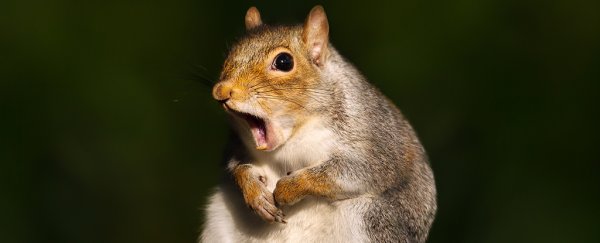Far and wide around the world, a whole bunch of animals are yawning right now. Maybe they're ready to sleep; maybe it's because they're hot and bored.
But if one thing is certain, the very thought of yawning makes us want to open our mouths and take a deep breath for some reason. (I've already stifled several yawns, and I'm barely a paragraph in.)
While scientists are reasonably confident they understand the physiological purpose of yawning, the reasons it's so contagious among social animals is still unclear.
As is often the case in science, the answers could already be scattered throughout the literature we've gathered on animal neurology, psychology, and social behavior.
To determine what existing evidence on the matter says, evolutionary biologist Andrew Gallup from State University of New York Polytechnic Institute in the US searched through past research and pieced the results into a single explanatory model.
According to Gallup, yawning might be a way for groups of animals to synchronize their behavior and promote collective alertness.
Along with that other weird gasping reflex, the hiccup, yawning doesn't seem to have an obvious purpose. At times of serenity (usually when we're tired), our jaw muscles clench, our diaphragm flexes hard, and we draw a long breath of cool, clean air.
Once speculated to be a means of replenishing oxygen or discarding carbon dioxide, it now seems to be more about moderating blood temperature in an effort to cool the brain.
This means of thermoregulation has to be an important one – virtually everything with a backbone does it. From mice to monkeys, to fish to flamingos, yawning is a function likely to have evolved quite some time ago in our shared ancestors.
If that is the case, why would one good yawn deserve another? The triggering of successive yawns between individuals – a behavior so contagious it can cross species barriers – would insinuate a benefit to a group of brains all cooling down together.
This might not be far from the mark. According to Gallup, that benefit is a literal wake-up call that helps compensate for the sleepiness of individuals.
Yawning generally takes place as we shift from one state of activity to another, whether it's reclining for a rest or waking up after a long sleep. We also yawn when anticipating a change, sparking or maintaining arousal when an environment is unlikely to prove stimulating.
A quick 'brain chill' from that influx of fresh air could be the perfect way to give it a brief shake in preparation of a possible task, without booting it into fight-or-flight mode.
In this light, it might not hurt having a few friends looking after your back as you drift off or sleepily plod into a potentially hairy situation. By sharing that yawn around, a group of brains can pick up the slack, raising vigilance while one or more members of the group show signs of changing state.
Speaking with Tess Joosse at Science Magazine, Gallup recalls an experiment he conducted last year.
"We showed people arrays of images that included threatening stimuli – images of snakes – and nonthreatening stimuli – images of frogs – and timed how fast they could pick out those images after seeing videos of people yawning or moving their mouths in other ways," Gallup explained.
"After seeing other people yawn, their ability to identify and detect snakes, the threatening stimuli, rapidly improved. However, following the observation of yawning, frog detection was unaffected."
As far as explanatory models go, it's a convincing idea that's ripe for experimentation. Uncovering the secrets of a good yawn might tell us a thing or two about subtle forms of communication within and between social species, including our own.
This research was published in Animal Behavior.
